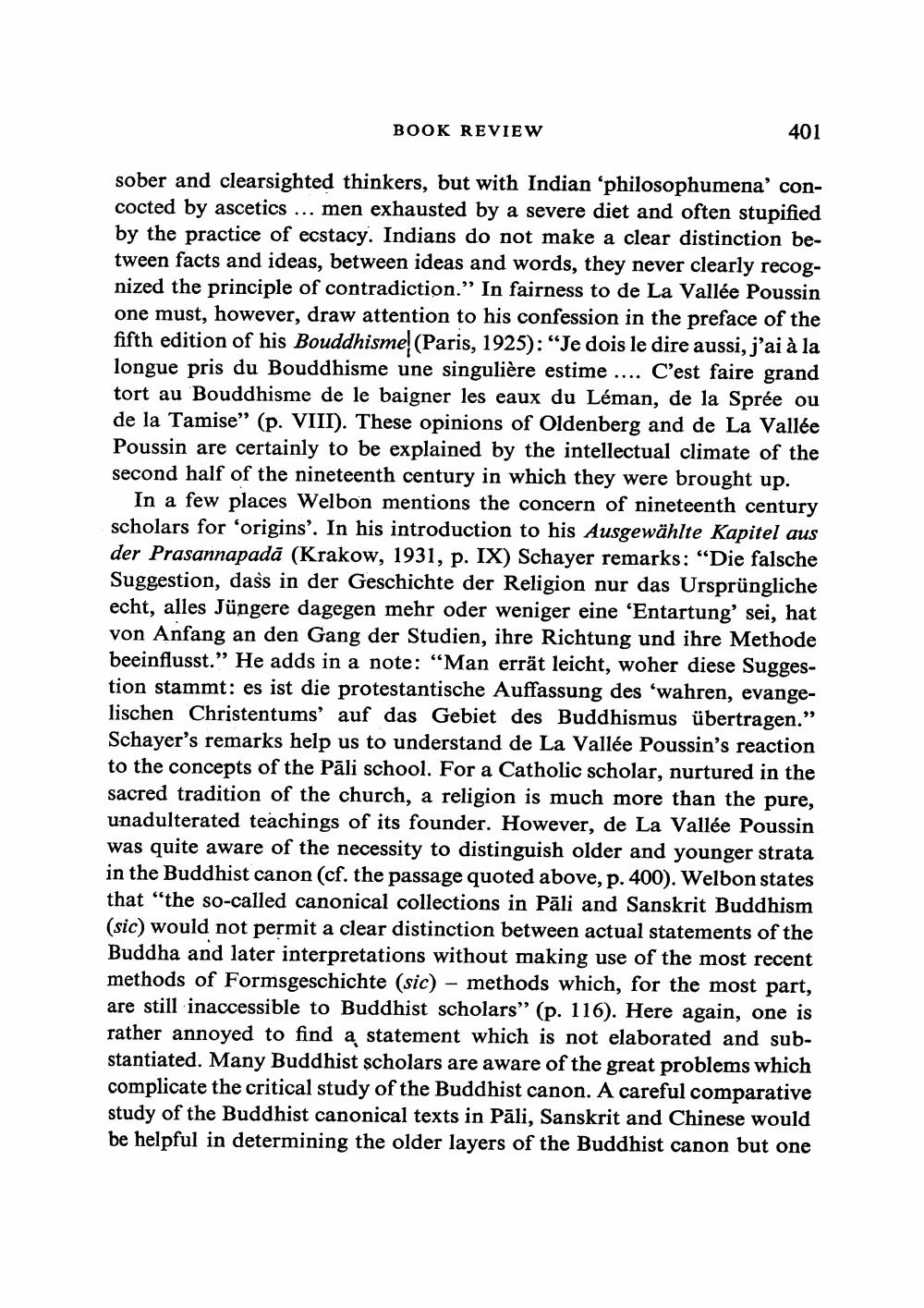Book Title: Book Review Of Buddhist Nirvana And Its Western Interpreters Author(s): Publisher: View full book textPage 6
________________ BOOK REVIEW 401 sober and clearsighted thinkers, but with Indian 'philosophumena' concocted by ascetics ... men exhausted by a severe diet and often stupified by the practice of ecstacy. Indians do not make a clear distinction between facts and ideas, between ideas and words, they never clearly recognized the principle of contradiction." In fairness to de La Vallee Poussin one must, however, draw attention to his confession in the preface of the fifth edition of his Bouddhisme (Paris, 1925): "Je dois le dire aussi, j'ai a la longue pris du Bouddhisme une singuliere estime .... C'est faire grand tort au Bouddhisme de le baigner les eaux du Leman, de la Spree ou de la Tamise" (p. VIII). These opinions of Oldenberg and de La Vallee Poussin are certainly to be explained by the intellectual climate of the second half of the nineteenth century in which they were brought up. In a few places Welbon mentions the concern of nineteenth century scholars for 'origins'. In his introduction to his Ausgewahlte Kapitel aus der Prasannapada (Krakow, 1931, p. IX) Schayer remarks: "Die falsche Suggestion, dass in der Geschichte der Religion nur das Ursprungliche echt, alles Jungere dagegen mehr oder weniger eine 'Entartung' sei, hat von Anfang an den Gang der Studien, ihre Richtung und ihre Methode beeinflusst." He adds in a note: "Man errat leicht, woher diese Suggestion stammt: es ist die protestantische Auffassung des 'wahren, evangelischen Christentums' auf das Gebiet des Buddhismus ubertragen." Schayer's remarks help us to understand de La Vallee Poussin's reaction to the concepts of the Pali school. For a Catholic scholar, nurtured in the sacred tradition of the church, a religion is much more than the pure, unadulterated teachings of its founder. However, de La Vallee Poussin was quite aware of the necessity to distinguish older and younger strata in the Buddhist canon (cf. the passage quoted above, p. 400). Welbon states that "the so-called canonical collections in Pali and Sanskrit Buddhism (sic) would not permit a clear distinction between actual statements of the Buddha and later interpretations without making use of the most recent methods of Formsgeschichte (sic) - methods which, for the most part, are still inaccessible to Buddhist scholars" (p. 116). Here again, one is rather annoyed to find a statement which is not elaborated and substantiated. Many Buddhist scholars are aware of the great problems which complicate the critical study of the Buddhist canon. A careful comparative study of the Buddhist canonical texts in Pali, Sanskrit and Chinese would be helpful in determining the older layers of the Buddhist canon but onePage Navigation
1 ... 4 5 6 7 8
